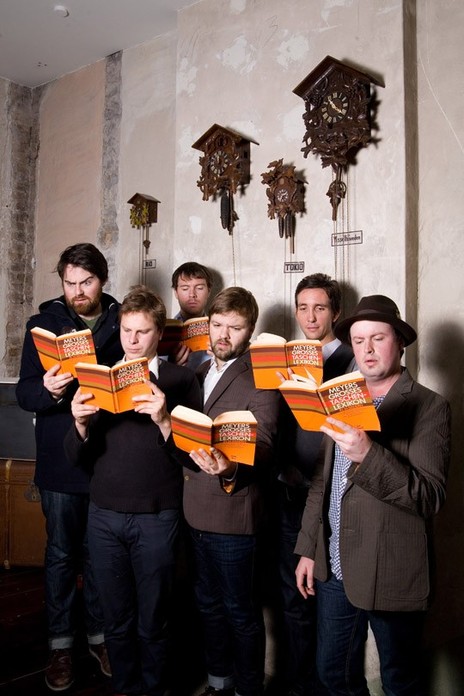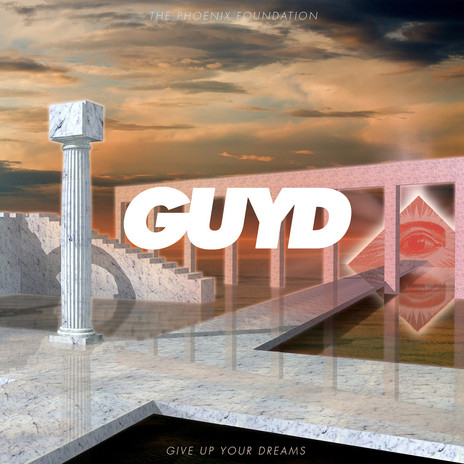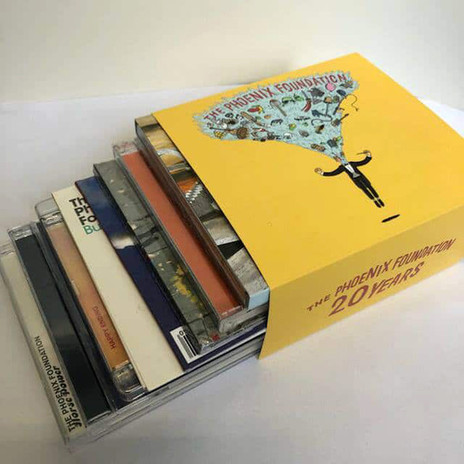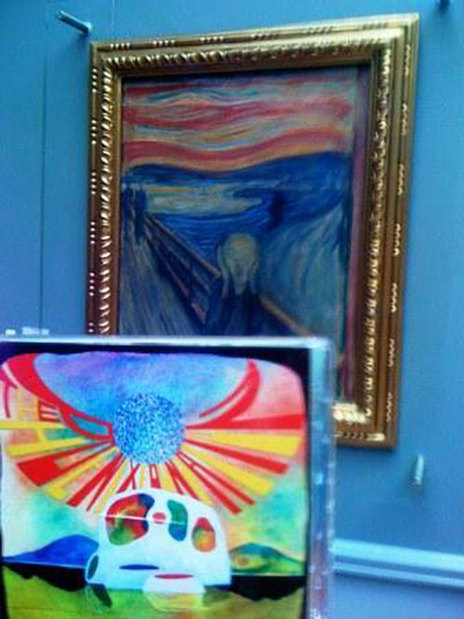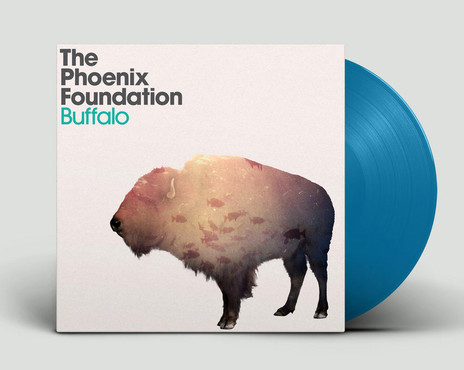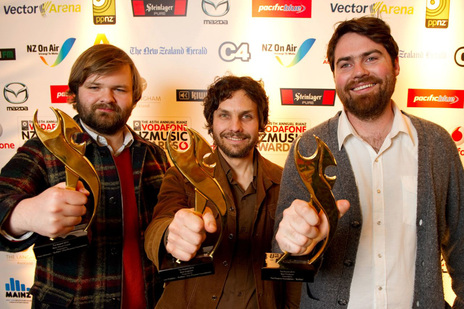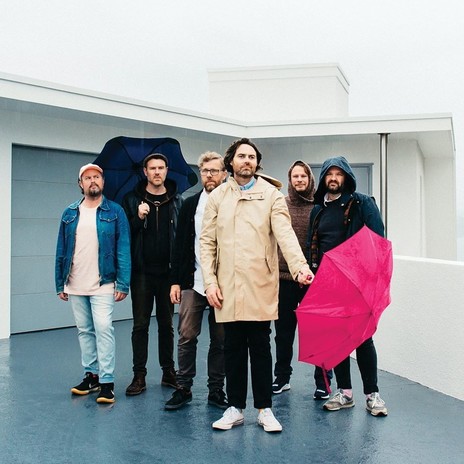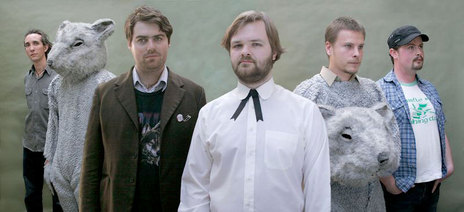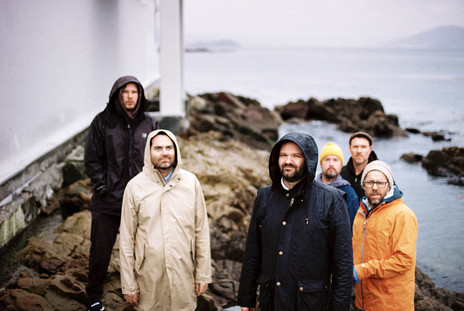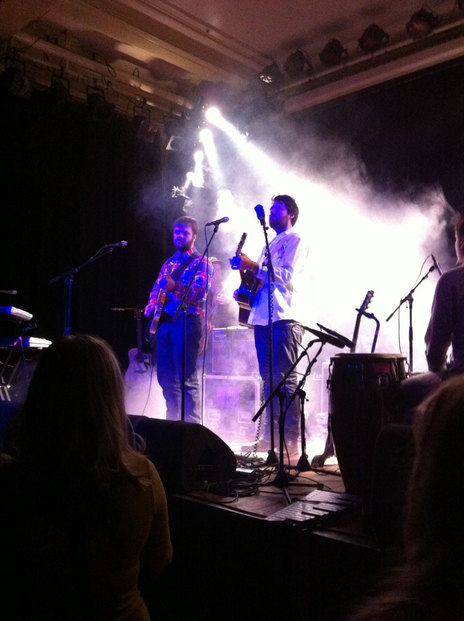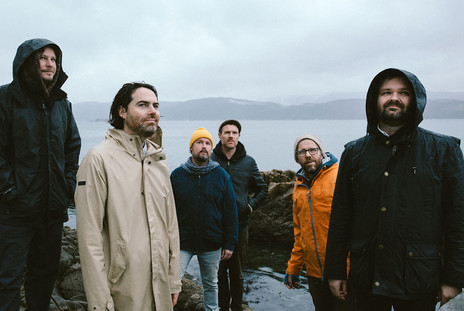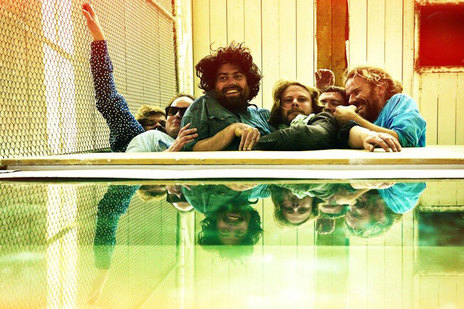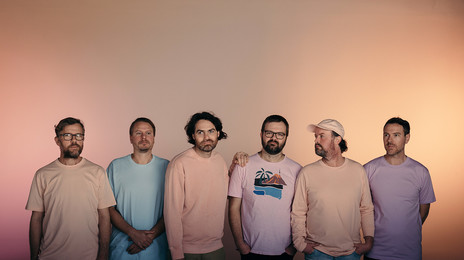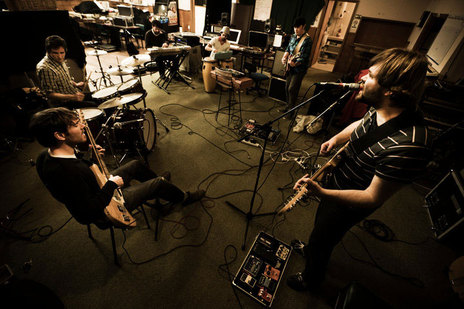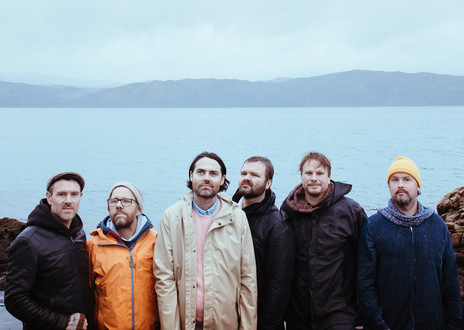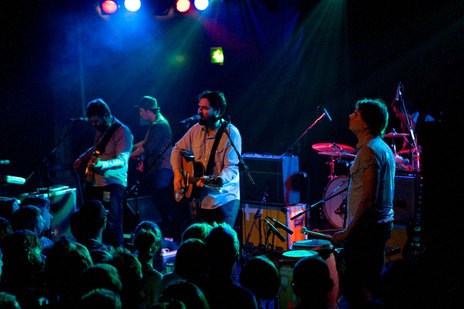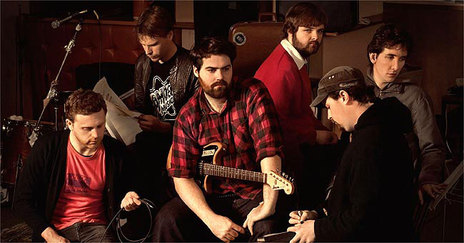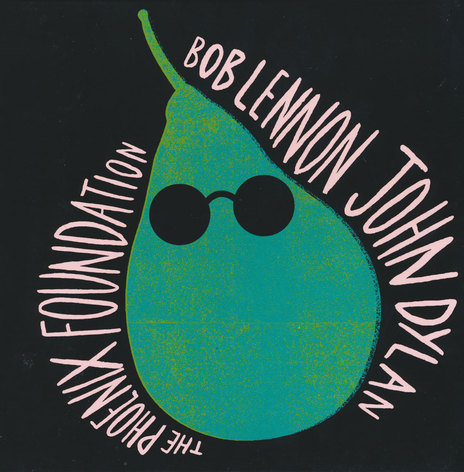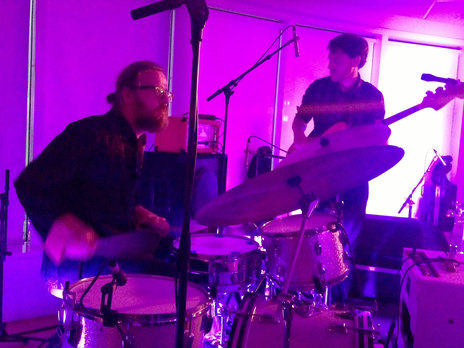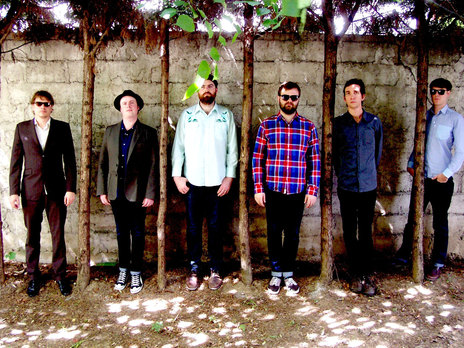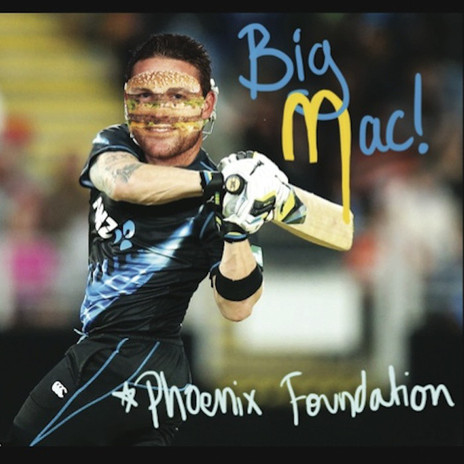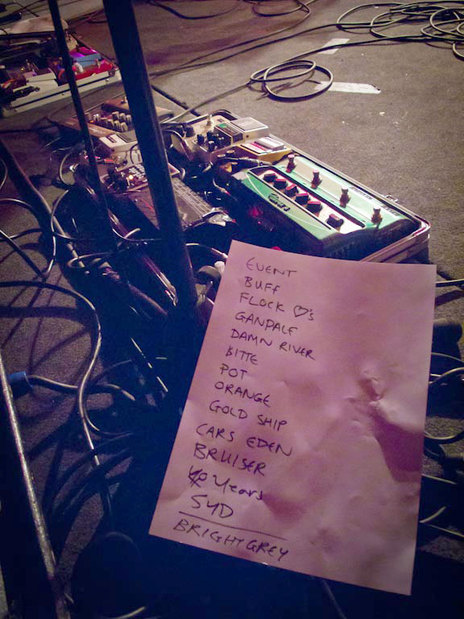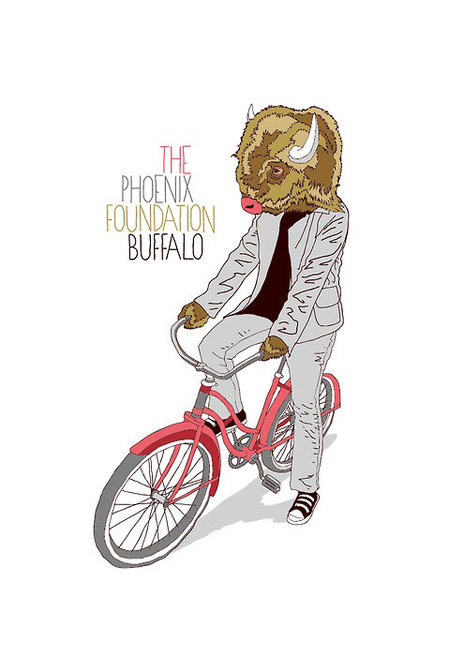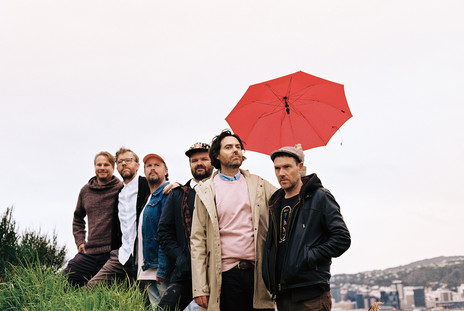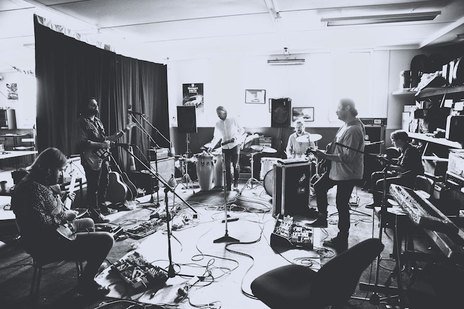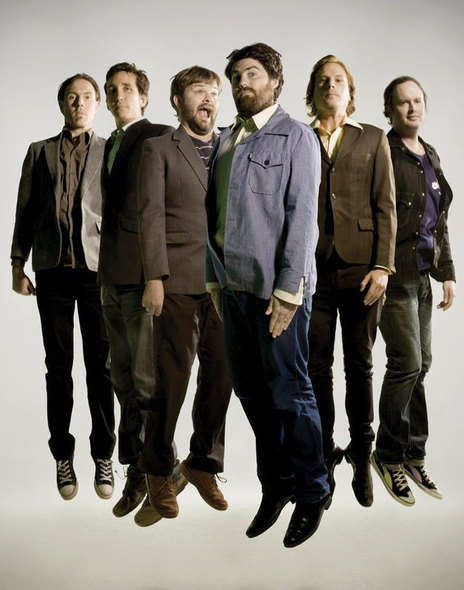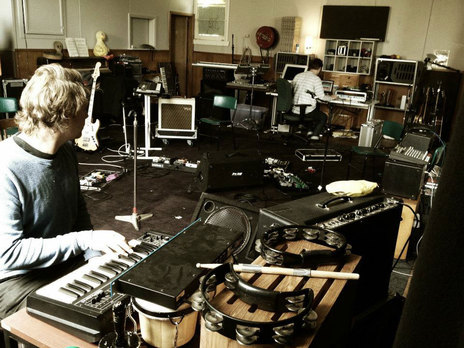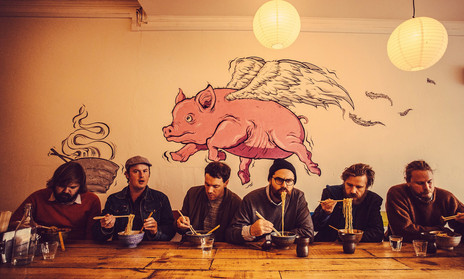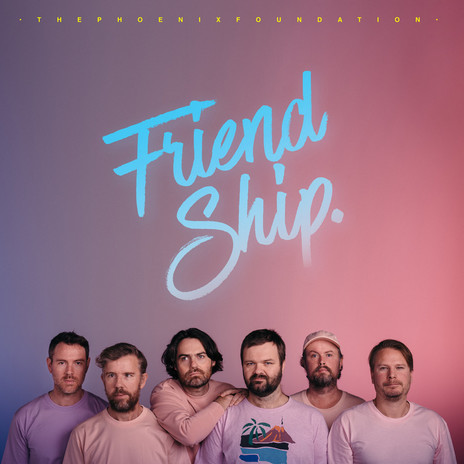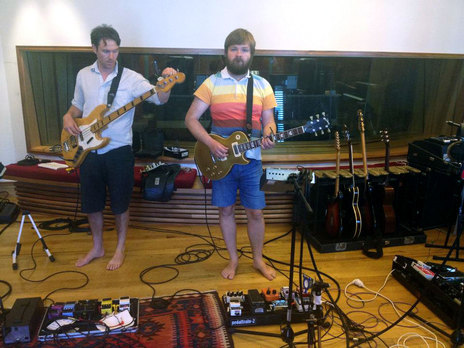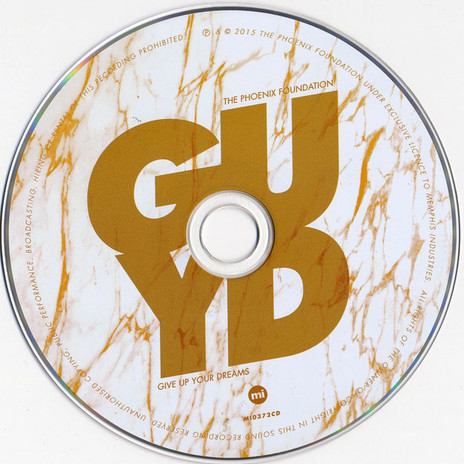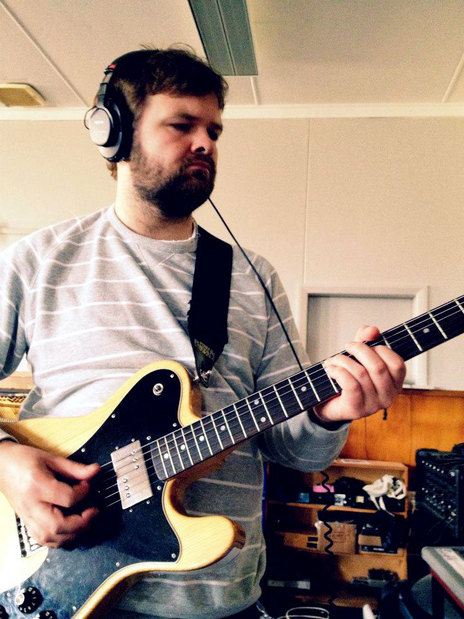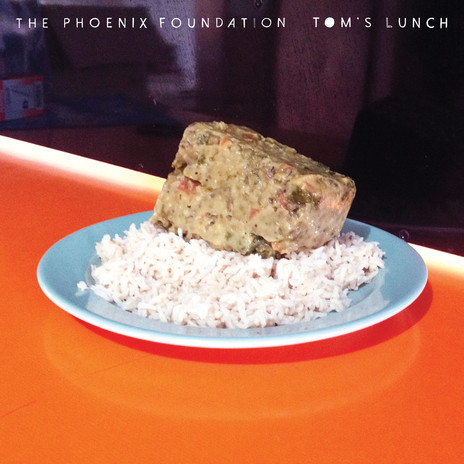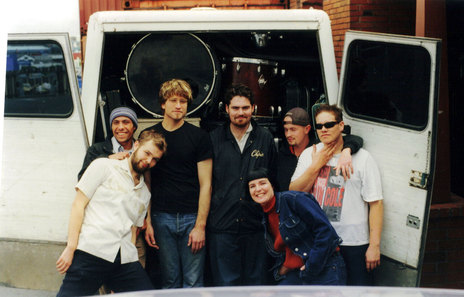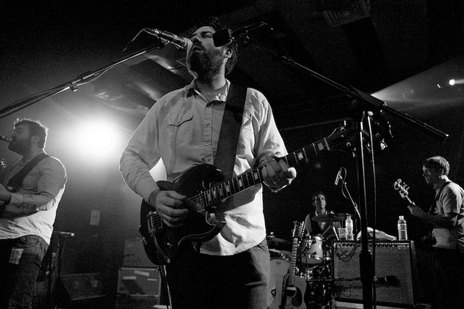The origins of The Phoenix Foundation can be found in two words: heavy metal. Wellington High School friends and multi-instrumentalists Lukasz Buda and Conrad Wedde founded Komos, their heavy metal band, with Samuel Flynn Scott joining on vocals and guitar. With their musical tastes evolving rapidly, Scott, a lover of indie-rock, suggested they form a guitar group. They became Sprink, with Tui Langford and Noel Phear.
THE ORIGINS OF THE PHOENIX FOUNDATION CAN BE FOUND IN TWO WORDS: HEAVY METAL.
In the heady world of rock music, change occurs frequently, and the band (now the core trio of Scott, Polish-born Buda, and Wedde) decided to rename themselves the Phoenix Foundation after a fictional organisation in MacGyver, the iconic 1980s television show. Their debut self-funded, self-recorded EP China Cove emerged in 2000 and while it didn’t set the world on fire, it did crystallise the band’s drive.
The following year, the trio expanded to a six-piece, with Tim Hansen (bass), Richie Singleton (drums) and Will Ricketts (percussion) underpinning the already established guitars, keyboards and vocals, creating an atmosphere of alt-rock experimentation. In addition to this, Scott was coming into his own as a songwriter, and his songs were getting attention.
It was this early line-up that recorded ‘The Drinker’ and ‘Blue Summer’ – non-album tracks that gained wider exposure. ‘The Drinker’ won best unreleased song at the bNet awards in 2002, while ‘Blue Summer’ topped the national alternative radio charts for four weeks.
‘The Drinker’, along with ‘Let Me Die A Woman’ and ‘This Charming Van’, are important to the band. “We went from making music that none of us particularly care about now to the next three songs that we made together [being] quite significant. Something clicked at that moment,” says Scott.
Horsing Around
2002 was a turning point. The band met Lee Prebble, who became instrumental in the development of the Phoenix Foundation sound. They went into his studio The Surgery (then used by TrinityRoots and Shihad), emerging with debut album Horsepower.
Experimental in technique, alt-folky, psychedelic, and with hints of electronica and country, Horsepower was impressive. ‘This Charming Van’ and ‘Let Me Die a Woman’ (originally recorded in Buda’s bedroom) struck a chord with listeners and critics, gaining significant airplay on RDU and 95bFM. Strong videos for ‘Gone Fishing’ and ‘Let Me Die a Woman’ (the Knack Award winner for outstanding results on a small budget), added to the band’s ever-increasing profile. Album track ‘Bruiser’ took advantage of their metal and funk backgrounds, with a metal-esque guitar solo and hypnotic rhythm section. Horsepower included instrumental tracks, something the band would do frequently on their albums.
Again self-funded, Horsepower was released in 2003, and the band signed with local independent music label Capital Records, who paid for mastering and distribution. As a parallel move, Luke Buda released his first solo album, The C-Sides, which built on live favourites from the early days of the band.
Taking flight
In between the release and support of Horsepower, and the recording of follow-up album Pegasus, the band changed bass players, with Warner Emery replacing Tom Hansen. They also moved from Capital Records to the Australasian indie label FMR, a time and place Scott speaks fondly of, especially one particular Christmas party … “Me and Warner … almost got into a fight with Kody Nielson from The Mint Chicks cause we were all so completely out of our brains.”
INSTRUMENTAL SOUNDSCAPES LIKE ‘HITCHCOCK’ POINTED TOWARDS THE BAND’S FUTURE SOUNDTRACK WORK.
Pegasus began life in 2004, with new material again written and recorded at The Surgery. A major step away from Horsepower’s mostly mellow melodies, Pegasus was less laid back, with a more cinematic feel – instrumental soundscapes like ‘Hitchcock’ pointed towards the band’s future soundtrack work.
Interesting musical touches abounded: Theremin and banjo (courtesy of David Long), electric violin (John White), and saxophone by Jeff Henderson and Warren Maxwell. Sam Scott sees Pegasus as a turning point for the group – “the point where people outside of us, DJs, music journos and our friends started listening.”
On the whole, Pegasus was darker, with lush, slightly sinister atmospherics. Some of the band’s best known material featured on this album, such as ‘Damn the River’, which had a frustrating reaction from radio, as Buda explained to me in 2010. “When we released ‘Gone Fishing’, we were told it was too long for commercial radio … and when we released ‘Damn the River’ we were told it was too short ... to work on the radio, a song must be between three and four minutes long … if it’s any other length, then the public won’t get it. I just remember going ‘Have you people heard of ‘Stairway to Heaven’?’”
This didn’t deter them from releasing other non-commercially timed tracks from Pegasus – ‘Cars of Eden’ clocked in at over seven minutes. If there were any doubts about the album, they were firmly pushed aside: Pegasus went Top 10 and gold sales followed. Again, strong videos added an interesting visual element to the band. The Phoenix Foundation consolidated their growing fanbase by opening for the Finn Brothers on their 2005 tour.
Sideways manoeuvres
Following the band’s success with Pegasus, in 2006 solo albums were released by Scott and Buda: The Hunt Brings Us Life and Special Surprise respectively. The recordings showcase the different styles of their writers: Sam Scott, with a loose, folky, country-acoustic vibe; Luke Buda’s album features trippy electronica and 80s pop and was inspired by the birth of his son. Both albums were critically lauded.
Another string to The Phoenix Foundation’s bow was their first foray into soundtrack work, recording the soundtrack to the Taika Waititi film Eagle Vs. Shark. This went well, and they recorded the soundtrack for Waititi’s follow-up film, 2010’s phenomenally successful Boy, placing their own instrumental pieces beside a faithful but quirky cover of Princess Te Rangi Pai’s ‘Hine e Hine’. The Boy soundtrack won best original music in a feature film at the Qantas Film and Television Awards in 2010.
But, we’re jumping ahead here, as that was three years after their next album: Happy Ending.
Success
Happy Ending signalled international success for the band. Now signed to Flying Nun after Warners purchased FMR, they also signed to US label Young American Recordings. The band’s time at Warners isn’t fondly remembered, says Scott. “We weren’t very happy … that was a pretty stink time in the band’s history. Not because they did anything shitty, just because our album came out the same month as the new Feelers record, who were like our nemesis band! They just got so much more attention than us.”
‘HAPPY ENDING’ RECEIVED FOUR AND FIVE STAR REVIEWS IN MOJO, UNCUT, AND THE INDEPENDENT.
The group toured the US successfully in the first half of 2007, playing 12 shows over three weeks – including three shows with The Veils. Happy Ending was released in October 2007, comprising material created while touring and built up in live performances. Again recorded at The Surgery with Prebble, the album was musically more upbeat, especially on ‘Bleaching Sun’, ‘40 Years’, and ‘Bright Grey’, a song detailing what Scott called “future angst”. ‘Bright Grey’ was a bNet Top 10 track, and had an impressive video directed by Taika Waititi, as did follow-up single ‘40 Years’. The band shared songwriting credits on Happy Ending, and had guest appearances by local musicians Age Pryor, Tom Callwood, and Craig Terris, among others.
Happy Ending was a finalist in five NZ Music Awards categories in 2008, winning two technical awards. To cap it off, 2007 was also the year Horsepower was finally released in the US. The Phoenix Foundation also strengthened their ties with the Finn brothers in 2008, supporting Split Enz on their reunion tour.The reaction from the UK gatekeeper press was impressive, with four and five star reviews in Mojo, Uncut, and The Independent – The Independent’s Andy Gill calling them “surely the most potent band to come out of New Zealand since the far-off days of The Chills.”
Interludes
The band did not tour internationally immediately on the back of the good press, deciding to wait until their next album. The wait wasn’t long: fourth album Buffalo hit the shelves in April 2010. Before that, however, there was the small matter of opening for Jarvis Cocker in Wellington in December 2009 – an opportunity to present the material off their new EP Merry Kriskmass. The EP featured some new material that wasn’t quite right for Buffalo, keeping the band in the public eye.
In between Happy Ending and Buffalo there were more solo albums released: Buda’s Vesuvius, and Scott’s Straight Answer Machine. This time Conrad Wedde released his debut album Bronze (as TC Wedde), and Will Ricketts released his album John Dryden (as Wild Bill Ricketts). Scott and Buda also teamed up to write the soundtrack for Separation City, another well-regarded venture into the world of cinematic sound, written by Scott’s father, humourist Tom Scott.
Buffalo roaming
By 2010, The Phoenix Foundation were no longer on Young American Recordings or Flying Nun/Warners. They were signed to Memphis Industries, and to EMI in New Zealand on a pressing and distribution (P&D) deal, while Slow Boat Records in Wellington released the local vinyl edition on their boutique label. The sessions for album number four, Buffalo, took over 18 months, with recording at rehearsal space The Car Club, and The Surgery, again with Prebble. Most of the material they recorded went on to the album, while other songs – ‘Dickheads Abound’ and ‘Middle Dream’ – became digital bonus tracks.
a gig at Glastonbury led to the band appearing on the Jools Holland show.
The album tracks were among their strongest, with singles ‘Buffalo’, ‘Flock of Hearts’ and the ghostly ‘Golden Ship’ showing a more elegiac style. During the recording, bassist Warner Emery decided his time was up, and he was replaced by someone close to them: Tom Callwood.
On release, Buffalo was another local success and was shortlisted here for the Taite Prize. It received positive international reviews in The Guardian and The Times, among others. The subsequent UK tour and slot at Glastonbury led to a spot playing ‘Buffalo’ and ‘Flock of Hearts’ on Later… with Jools Holland, giving them an immediate profile boost; their album sales increased dramatically in the following weeks.
Modern rock
By now, the group had again changed labels, as EMI had been purchased by Universal. This time, the change worked well. “[New Zealand MD] Adam Holt didn’t put any pressure on us to hold up our end of the deal we signed with EMI,” Scott says. “He was like ‘I’m a fan of the band, this is the contract I’d like to sign you to … I’m really keen to work with the band.’ It’s probably been the best company experience we’ve ever had. It was the opposite of moving from FMR to Warners, where no one seemed to have any interest in the band.”
Almost immediately after returning from the UK, the band began on their fifth album, Fandango. “We realised that it was two years since we had released Buffalo,” Scott explained, “so we thought we’d better get into the new one now, or else it’s going to be a really long gap between albums.”
Fandango took 15 months from start to finish, and was recorded in a variety of locations: Roundhead Studios, The Car Club, The Surgery, The Party Room in Dunedin, and in a barn on Tarureka Estate in Featherston. While Prebble was again involved with the recording, Brett Stanton and Neil Baldock also played their parts – Prebble and Stanton winning the NZ Music Awards for best producer and best engineer.
The band were meticulous about trying out ideas. “We have a policy – any idea that comes up has to be tried,” Scott admits, adding, “which … ultimately means that … a lot of things which sound like they’re not going to work in theory do end up sounding pretty good once you go through the process … it takes a lot of work and focus.” In the usual tradition of Phoenix Foundation albums, the group lost a band member, this time drummer Richie Singleton, who was replaced by Chris O’Connor (Don McGlashan’s Seven Sisters, SJD band). Both drummers feature on the album.
Fandango was previewed from start to finish at showcase gigs in Wellington in January 2013. Released the following April, the band’s experimental and diverse influences are present: Can, Amon Düül, Harmonia, and The Carpenters. A double album, Fandango encompassed polished pop (‘The Captain’), motoric rhythms (‘Black Mould’), and psychedelic folk (‘Corale’). The experimental,17-minute ‘Friendly Society’ – with Neil Finn and James Milne (aka Lawrence Arabia) on backing vocals – was critically divisive, and Scott told Shane Gilchrist of the Otago Daily Times, “About 30 percent of the reviews said it’s the best thing on the record; the other 70 percent said it’s the worst.” As it turns out, you can’t please everyone all of the time.
Fandango was well received, with even the typically cynical NME giving them high praise. The band toured the UK and Europe almost immediately after the album’s release, capitalising on the inroads already made. While the local part of the tour is memorable for Scott, who tore a disc in his spine and was hardly able to walk, his highlight is the band’s last European show in Paris.
“I think we’d sold like three tickets!” he laughs. “We came back to the gig, and we walked round the corner, and the street outside the venue was just packed with people! It was a classic Paris crowd … it was a really loose, scummy venue, and the crowd was really into it … what we thought was going to be a bummer was a really great end to the tour.”
The Phoenix Foundation was in demand, with local gigs and major festival gigs lined up.
While creating Fandango, the band also recorded two tracks for tribute albums: Fleetwood Mac’s ‘Don’t Stop’ for Mojo magazine’s Rumours Revisited, and a harmony-laden ‘Don’t Make Promises You Can’t Keep’ for Reason to Believe – The Songs of Tim Hardin. The latter inspired the BBC’s Daniel Ross to comment on their “sublimely intelligent arranging skills”. Also, in keeping with their mutual admiration society with Neil Finn, they performed with him when Finn played at the world premiere of The Hobbit: An Unexpected Journey in Wellington.
As 2013 turned to 2014, The Phoenix Foundation was in demand, with local gigs lined up, including the returning Big Day Out, as well as the Rippon and Rhythm and Vines festivals.
At the start of December 2013 they returned to the studio to record a new EP, a decision Scott considers simple. “We’ve made quite a few albums now,” he explains, “we don’t want to get caught in the cycle of it being this two-year gap where we have to work our arses off to make some mission statement album, where it has to be bigger, better produced and grander than the last album. We want to put out music as we feel like it, and as we make it.”
The Phoenix Foundation's EP Tom's Lunch was released by Memphis Industries on 19 May 2014 and included the tracks from the numbered limited edition vinyl 7-inch ‘Bob Lennon John Dylan’ / ‘Asswipe’ issued a month earlier for Record Store Day 2014.
In addition, a digital single, ‘Big Mac (Run Rate)’ was written, recorded and released on 27 March 2015 to support the New Zealand cricket team.
The Phoenix Foundation make the music they want to make. No compromise. The final words on the band’s achievements go to Sam Scott: “There’s a sense that your goals are constantly getting bigger – you never feel like you’ve achieved what you set out to do – you’re constantly raising your expectations on yourself.” Amanda Mills
--
In August 2015 came the Phoenix Foundation’s sixth studio album, Give Up Your Dreams. With barely any acoustic guitar, and a concerted focus on the rhythm section, it was a step into the unknown – very fitting for an album described by its creators as “astral” and “cosmic”. Other descriptors included “full of technicolour sparkle” (The Guardian), “dreamlike” (Nick Bollinger) and “uplifting” (Under the Radar). The reception was favourable, with critics praising the musical exploration and ambitious performances. The album picked up a nomination for the Taite Music Prize and the title track made it onto the APRA Silver Scroll shortlist.
The ‘Give Up Your Dreams’ album was described by the band as “astral” and “cosmic”.
‘Give Up Your Dreams’ did indeed stand out, for a number of reasons – the star power of Bret McKenzie in a music video certainly draws a crowd, and a remix from Neil Finn is an honour, but ultimately it was the raw and heartbreaking lyrics that really made it something special.
The song was inspired by a conversation the band had with friend James Milne, when Fandango did not gain the European traction they were expecting. Milne recommended the Phoenix Foundation ditch their career aspirations for the sake of the art: “In many ways, this is the central theme of the record,” Scott told The Guardian in his track-by-track breakdown. “It’s sort of the opposite to that American idea of excellence. ‘Don’t let anyone tell you that all your dreams will come true’ … because they won’t. I’m screaming ‘I’m a loser and I’m losing my belief’ but the pitch-shifted wiser version of myself assures me ‘you’re not a loser, you’re a human… and I love you’.”
As per usual, the album was supported with particularly good-looking merch: a limited-edition gold vinyl pressing, and dream-related items: a pillowslip and sleep mask.
Shortly after the release of Give Up Your Dreams, Scott and Buda joined Dave Dobbyn on his 2016 album Harmony House as producers, co-writers and bandmates.
Between the collaborating, touring and writing, Scott, Buda and Wedde also broke off for stints of film and television composition – a financial necessity. “It’s a massive time suck,” Scott told AudioCulture in 2020.
It may not be their passion, but they are very good at it, winning best original music in a series for sci-fi show Cleverman at the 2018 APRA Silver Scroll Awards, and before that qualifying for an Oscar nomination for their Hunt for the Wilderpeople score.
On a more creatively fulfilling note, the Phoenix Foundation joined the New Zealand Symphony Orchestra in 2018 for Celebrate! – a four-date tour to mark the band’s 20th birthday. With NZSO as their “extended band”, they reworked songs – mostly from Horse Power and Pegasus – with arrangements from heavy hitter composers Gareth Farr, Claire Cowan, Chris Gendall and Hamish Oliver.
“The song matches were perfect,” Hayden Green declared in his review for RNZ Music. “I can’t think of another contemporary New Zealand band that would suit the NZSO treatment as well.”
The tour was supported by a beautiful box set of all their albums to date, in typically stylish flair. Continuing the birthday buzz, Buffalo was lovingly reissued for its 10-year anniversary in mid 2020. Limited edition, vinyl LPs were available in deep orange and cobalt blue, and included seven new songs. The bonus tracks were released weekly from June 5 – kicking off with ‘Danzig Bro’, a nod to Glen Danzig of the Misfits, Samhain and his eponymous Danzig.
Remarkably, the Phoenix Foundation managed another album release in 2020, battling through the complications of an international pandemic. Friend Ship arrived on October 16, preceded by new singles ‘Tranquillity’, ‘Decision Dollars’ (both featuring Tiny Ruins’ Hollie Fullbrook), ‘Hounds of Hell’ featuring Nadia Reid and ‘Landline’ – all ceremoniously delivered with well-crafted music videos.
If Give Up Your Dreams was an exercise in compositional exploration, Friend Ship is a return to a lyrical focus. “That decision actually happened pretty early on, it’s just the way I personally wanted to approach it” Scott told AudioCulture ahead of the Friend Ship release. “We really went there on the performance side of Give Up Your Dreams, and maybe kind of peaked out in that direction and so, everyone was on board with that change in direction … [Luke] and Conrad really like to push the band in quite interesting ways musically and performance wise, but that’s maybe less of my focus and I’m always quite interested in the songs.”
Songwriters certainly had no shortage of inspiration in the tumultuous late 2010s.
Songwriters certainly had no shortage of inspiration in the late 2010s, which were characterised by local and global upheaval in almost all realms: social, political, technological and of course, environmental. For the Phoenix Foundation, the enormity of current events was at the forefront of their songwriting, but not in the overt ways you’d expect.
“You can really say something about the world, if you actually say something about your specific, personal experience,” explains Scott. “I try to look for inspiration first and foremost in my own life, in my own experience. When topics like climate change or modern anxiety – when those big picture things come into it, they are coming into it because they are shadows that hang over everyday life. For me with ‘Transit of Venus’ and Luke with ‘Miserable Meal’, we’re both singing about domestic situations, the formality of doing the dishes or cooking dinner, that sort of thing, but hanging over that are these much darker and intense concepts.”
With a thematic thread of human connection running throughout, it feels appropriate that the Phoenix Foundation invited artists they love into the fold – Friend Ship enjoys features from Nadia Reid, Anita Clark (Motte), Hollie Fullbrook, Dave Dobbyn and old mates, the NZSO.
“That’s all been really fun, it’s all different directions and decisions and it’s not just us working with the same, old inner circle of friends,” Scott told AudioCulture. “And it still feels natural, like an easy decision to make.”
Collaboration continued into the music videos with the band working with a variety of directors and letting them drive the concepts – they reckon you get a more interesting result that way. “We’ve chosen to work with people we haven’t worked with before in order to kind of push ourselves out of our comfort zone visually.”
Throughout all the collaboration, the exploration, and the side projects, Scott says Phoenix Foundation is still rooted in the same philosophy.
“I’ve been saying the same thing about our band for 20 years, which is we try to make music but based on what pop music was in the 60s, which is that we want it to be songs, we want it to keep being innovative, and keep being interesting, and not sounding like what’s on the radio, but what we want to hear.”
--
Updated by Rosie Howells, October 2020
